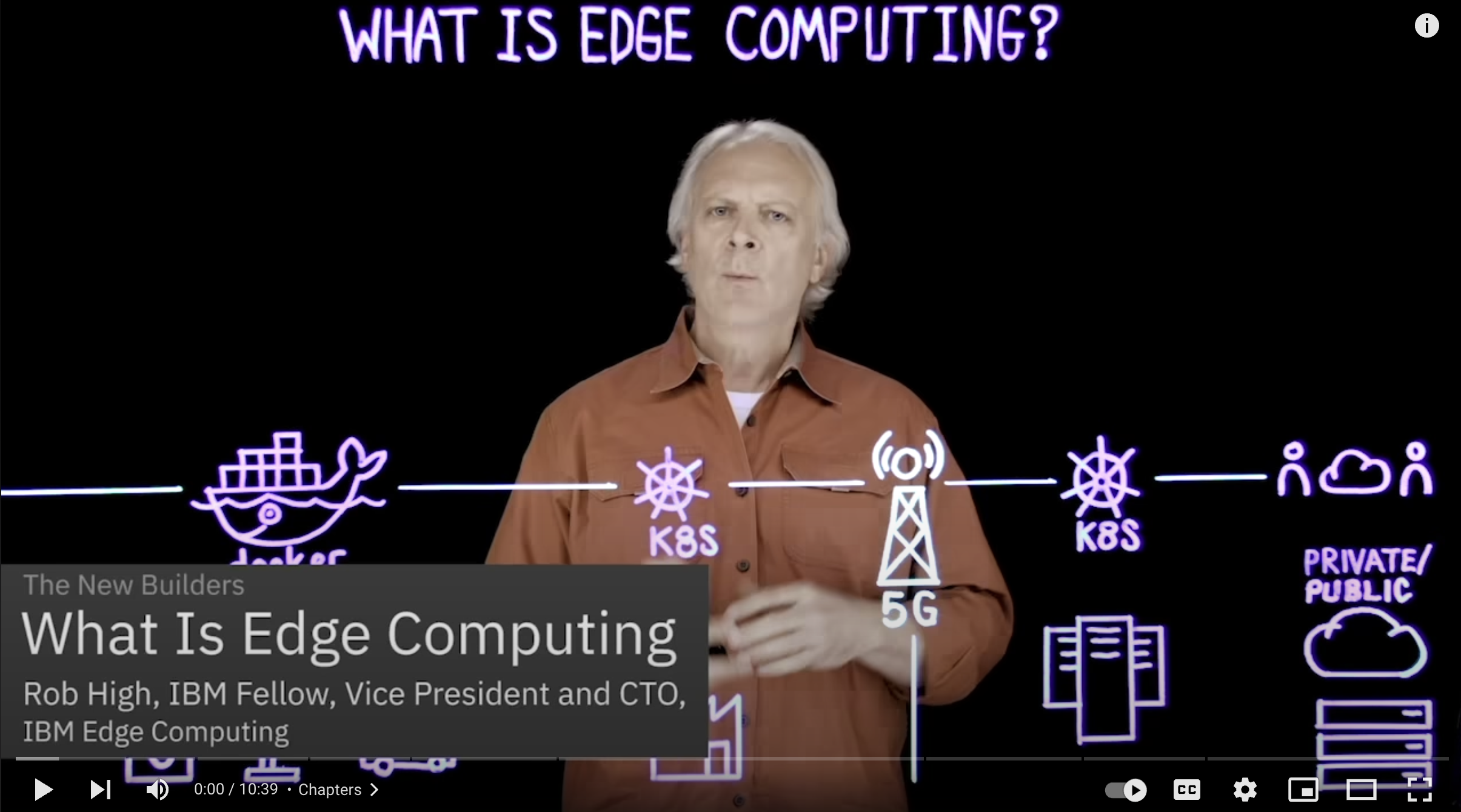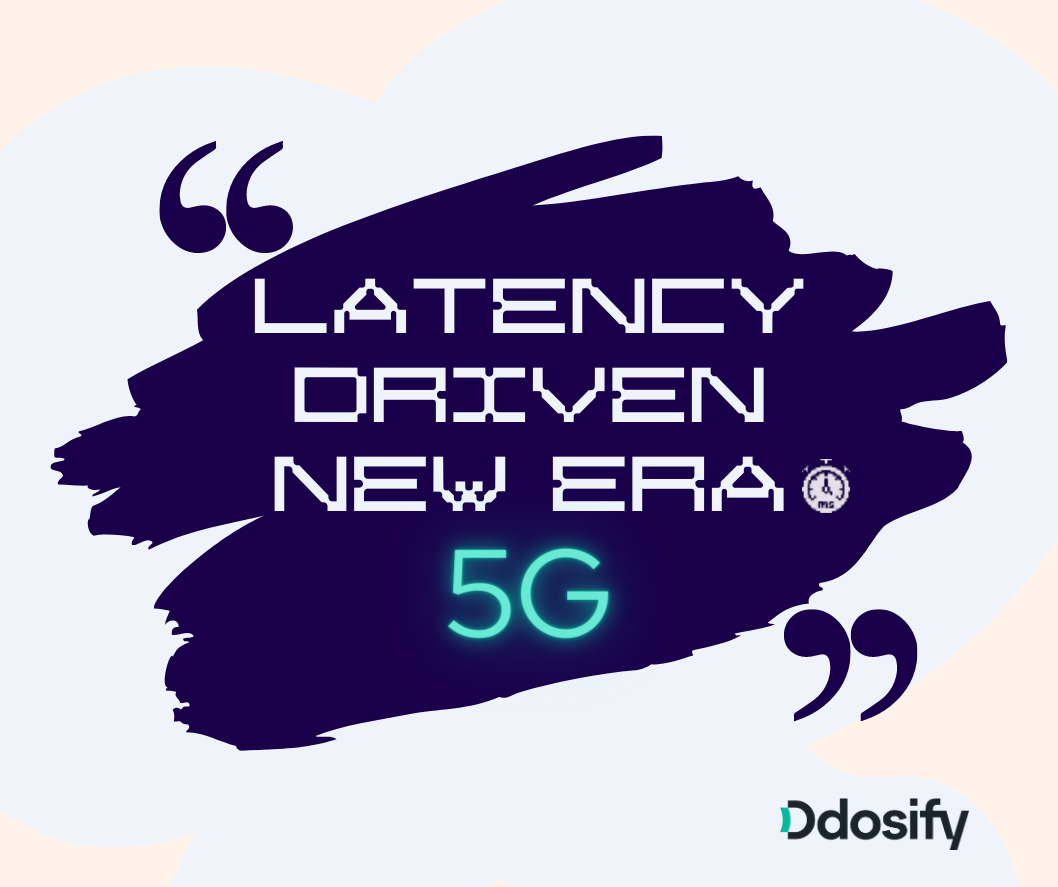
What exactly is latency in telecommunications? The time it takes for a set of data to travel between two points on a network is referred to as “network latency." The low latency of 5G technology makes it very different from previous generations of mobile network technology.
5G stands for the fifth generation of cellular technology, which was developed to make wireless communication both faster and more reliable. It is expected to significantly improve cellular network speed and capacity, enabling new use cases and applications that require high-bandwidth, low-latency communication.
Compared to 4G, 5G has an astonishingly low latency rate when sending and receiving information. The latency that we experience with 4G can range from 50 to 200 milliseconds, but with 5G, it will be reduced to just one millisecond. When latency is too high, the data can be delayed or lost.
The topic of latency and its impact on the 5G user experience comes up frequently, and different perspectives exist. One of the most important but controversial takeaways from testing the performance of 5G on smartphones is that users' viewing and consumption habits won't change much after the upgrade, as the time it takes to load content doesn't significantly affect their perceptual capacity. The user experience of 5G for humans, as described by Reiner Ludwig of Ericsson, is largely determined by speed and only partially by latency.
The most important thing that will change with 5G is how machines talk to each other. This is because connectivity will be more reliable and take less time. This will have a significant impact on a number of different industries as well as their economic output.
Thanks to the increased bandwidth made possible by 5G, edge computing will play a pivotal role in ushering in unprecedented advances across many industries. With the fact that 5G and edge computing can host various types of platforms and applications and provide a high level of flexibility for application developers, the global economy has reached a critical juncture.
The outputs of business operations in a variety of industries, such as healthcare, transportation, and utilities, will be more efficient than they have ever been before, which will increase the total value of industries that can take advantage of 5G in terms of the expansion of the economy.
The total estimated global GDP boost from 5G-enabled enhancements will be around US$1.3T.
The value of Edge Computing for lowering latency and for other 5G-related technologies
Thanks to the increased bandwidth made possible by 5G, edge computing will play a pivotal role in ushering in unprecedented advances across many industries. With the fact that 5G and edge computing can host various types of platforms and applications and provide a high level of flexibility for application developers, the global economy has reached a critical juncture.
What is edge computing? “Edge computing is a type of cloud computing that distributes compute power (data processing power) to edge devices rather than centralizing compute and storage in a single data center. This reduces network latency and contention between the equipment and the user, increasing responsiveness.”
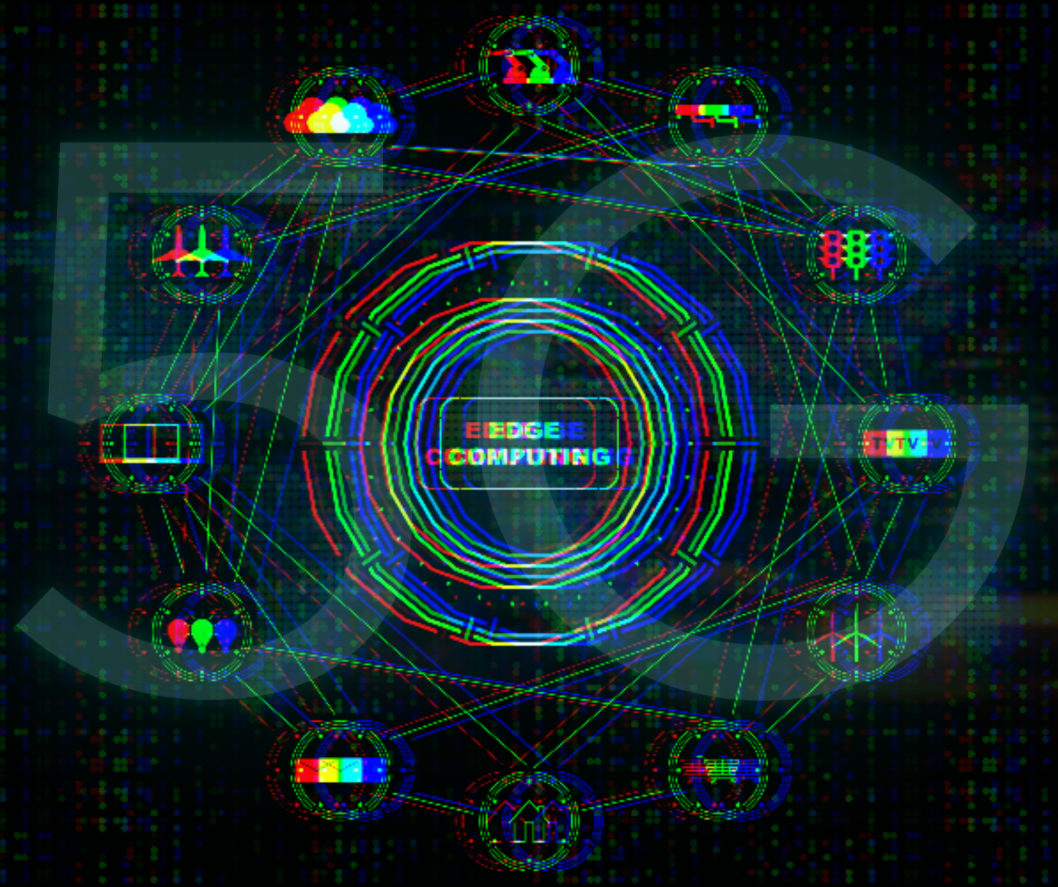
Computing and data storage can now be located closer to the devices that generate or use the data thanks to the distributed computing paradigm known as "edge computing."
In order to speed up application performance, edge computing places computing workload creation and processing as close to data sources as possible.
It involves placing small, powerful computing devices at the "edge" of a network, close to the devices that generate or consume data, as opposed to centralizing data processing and storage in a large data center located in a remote location.
5G & Edge Computing
As 5G networks are expected to allow for new applications and services that rely on edge computing to provide low-latency, high-bandwidth communication, there is a strong connection between 5G and edge computing.
Computing at the network's edge is essential if 5G technology is to realize its potential to deliver services to end-user devices at the utmost possible speed and with the lowest possible latency.
It's safe to say that edge computing is the key to successfully delivering 5G technologies.
5G networks and edge computing, for example, could be used to enable real-time video analytics, remote surgery, self-driving cars, and other applications that require fast, reliable communication and data processing.
However, it is essential to keep in mind that 5G and edge computing are not directly dependent on one another in any way.
Edge computing can be used with any kind of network, and 5G networks can be used to support a wide range of applications and services, not just those that use edge computing.
You can learn more about "Edge Computing" by watching this video featuring Rob High, VP and CTO of IBM Edge Computing.
In addition to that, Ericsson has compiled a comprehensive report on the development of edge computing solutions.
These solutions can host a variety of platforms and applications, and they can provide application developers with flexibility.
This flexibility will be essential for the reliability of communication after the spike in data volume that will result from the implementation of 5G-related technologies.
This reduces network latency and contention between the equipment and the user, increasing responsiveness.” - Ericsson.com(Next-Gen-Cloud-Edge-Ecosystems Report)
Automation, processing, data collection, and delivery are going to be much faster and more dependable in many industries. A connectivity transformation of this scale holds the promise of improving economic outcomes.
5G Impact on Economy
The outputs of business operations in a variety of industries, such as healthcare, transportation, and utilities, will be more efficient than they have ever been before, which will increase the total value of industries that can take advantage of 5G in terms of the expansion of the economy.
The total estimated global GDP boost from 5G-enabled enhancements will be around US$1.3T.
Almost everyone agrees that 5G will create new and improved values through better products and services. Of course, there are still some unknowns about the application of 5G-enabled technologies while infrastructure construction is in full swing around the world.
By 2030, global GDP will rise as a result of 5G, the next generation of mobile connectivity. Overall, 5G will have a big effect on GDP in many different industries, such as:
- US$530B in 5G-powered healthcare
- US$330B in 5G-powered smart utilities,
- US$254B in 5G-powered consumer & media applications,
- US$134B in 5G-powered industrial manufacturing
- US$85B in 5G-powered financial-services applications.
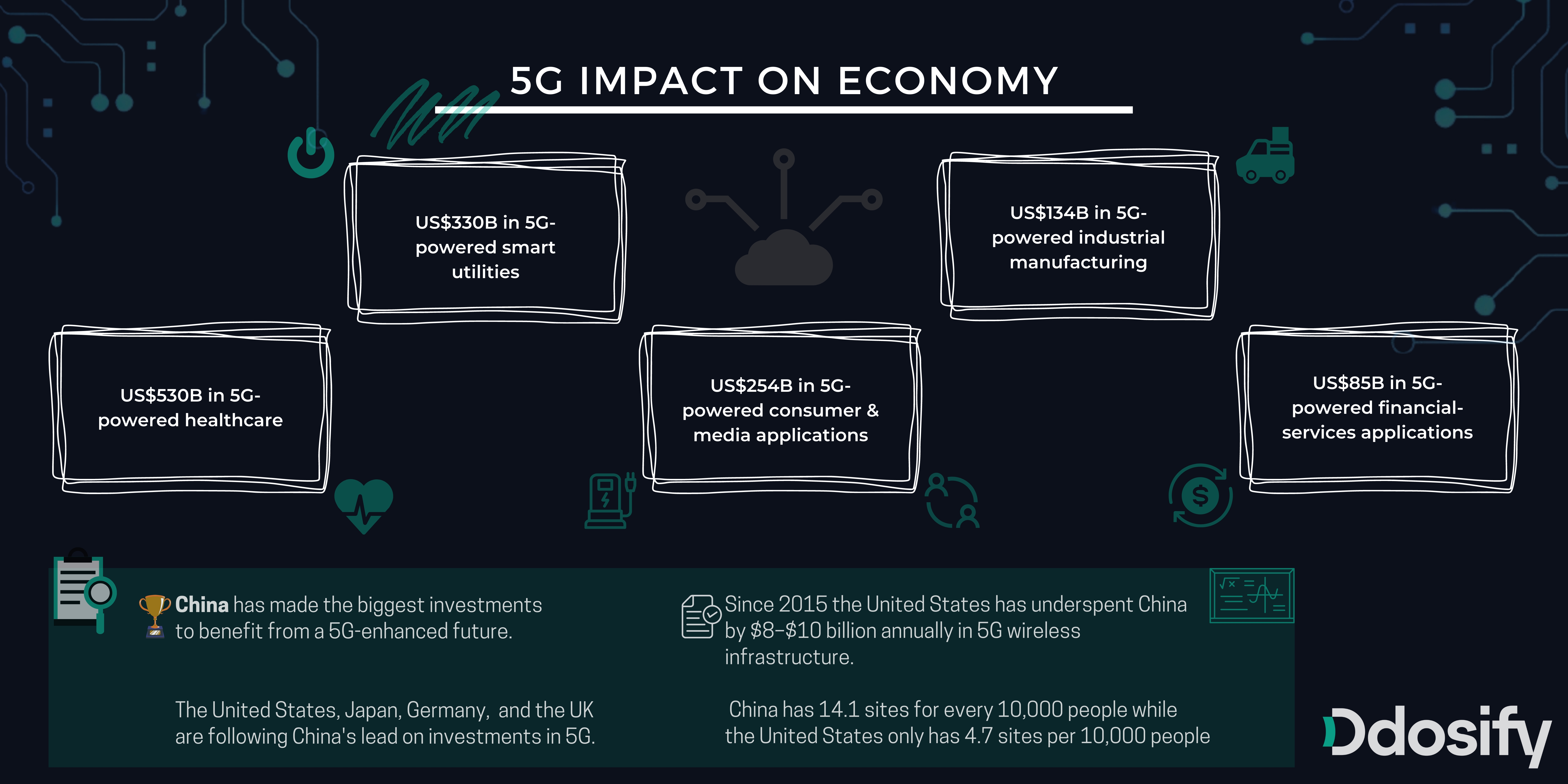
The nations with the most influence on the global economy have also been investing in 5G technology. China has made the biggest investments to put the country in the best position to benefit from a 5G-enhanced future.
During the course of 2017, China Tower added approximately 460 sites per day, which suggests that tower companies and carriers in the United States have added fewer sites in the past three years than China Tower has added in the last three months, according to a report by Deloitte.
The United States, Japan, Germany, and the United Kingdom are following China's lead on investments in 5G.
Two other crucial pieces of information are reflected in the same report about countries that are attempting to adapt to a future that is enhanced by 5G.
First, since 2015, the United States has underspent China by $8–$10 billion annually in 5G wireless infrastructure. And second, China has 14.1 sites for every 10,000 people, while the United States only has 4.7 sites per 10,000 people.
Let's take a look at how the hyperconnectivity of people and machines made possible by 5G, along with its improved speed and decreased latency, has the potential to change industries and economies.
How speed and latency can cause changes? Some A/B test results on consumer behavior and conversions as a result of simple website speed improvement
With 5G, mobile site speed will increase while bounce rates decrease, which is crucial for online user experiences.
In several tests on site speeds and their effects on user behavior, even a small 0.1s improvement led to significant changes in conversions, page view per session rates, conversions at several stages through the visitor funnel, and average order value, as well as significantly lower bounce rates.
We'll go over the highlights of some A/B tests from each consumer-related industry in the sections that follow.
What impact does page speed have on visitors or customers in the retail industry?
User transactions with retail consumers increased by 8.4% when mobile site speed improved by only 0.1s.
Page views per session were also up 5.2%. The average order value increased by 9.2%.
The bounce rate decreased by 0.6% on the homepage, 5.7% on the product listing page, and 1.9% on the product details page.
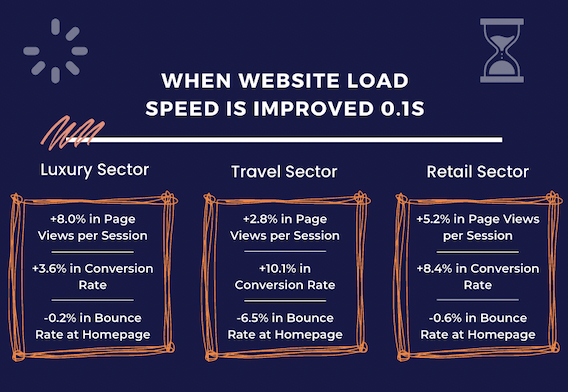
What impact does page speed have on visitors or customers in the travel industry?
A 0.1-second increase in site speed results in a 10.1% increase in conversions from travel consumers and a slight 1.9% increase in average order value.
On mobile, the bounce rate of product listing pages was reduced by 5.4%, and page views per session increased by around 3%.
Furthermore, the bounce rate on the homepage was reduced by 6.5%.
What impact does page speed have on visitors or customers in the luxury goods & services industry?
During the pre-checkout stages of their conversion journey, speed is the most important detail for retail customers. During A/B tests on 10 luxury brand websites, a 0.1s improvement in website load time resulted in an 8% increase in page views per session.
Customers who went from product details to add to basket increased by 40.1%. Product listing page bounce rates improved by 5.7% and 5.4%, respectively.
Customer engagement in retail and travel, on the other hand, has increased by 5.2%.
The introduction of 5G technology will result in both disruptions and improvements across a variety of industries.
Possible advancements that will take place within the healthcare industry as a result of the transformation to 5G connectivity
Remote surgeries will be possible, thanks to the 5G network.
This will allow medical professionals to operate on patients from all over the world. They will be able to see what is going on inside the patient's body using AR and VR technologies.
Productivity in the healthcare industry will improve.
Hospital stays will be much shorter, patient-doctor interactions will be more efficient, medical equipment will be delivered faster by drone(s), and the telemedicine experience will be enhanced by 5G-connected wearables and high quality data monitoring.
With 5G connectivity, there could be improvements in the transportation industry and in technology for self-driving cars.
5G will make it possible for autonomous vehicles to communicate with one another, traffic lights, and other aspects of the surrounding infrastructure in a manner that is more streamlined and effective.
This is because 5G has a faster response time than 4G. The increased bandwidth that 5G provides will also help to simplify the many different communications and signaling procedures that are necessary for the operation of autonomous vehicles.
The use of autonomous vehicles is not just about convenience but also about safety.
As a result, the advancement of technology that enables the safe operation of autonomous vehicles is dependent on the efficient and dependable collection, delivery, processing, and, finally, decision-making based on data.
5G networks, when combined with edge computing technology, will provide these vehicles with the necessary bandwidth as well as faster data transfer and processing times, increasing the safety and reliability of autonomous vehicles, which are still controversial aspects of this new technology.
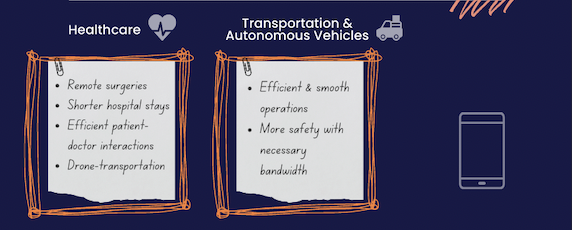
Developments in the fields of power and utilities as well as the energy industry made possible by 5G
5G will allow for more data to be collected and processed in less time.
This will make it easier to keep a closer eye on the data about how much power is being used.
Intelligent power grids and sensors will be able to bring about advanced improvements once 5G connectivity is implemented.
The most important characteristics of 5G are its low latency, reliability, and increased mobile bandwidth.
These characteristics will result in quicker and more effective communication for the management of energy, water, and waste.
Access to big data as well as data on energy consumption will also be improved thanks to 5G. Utilizing this information can assist in increasing operational efficiency while simultaneously lowering energy consumption.
With 5G technology, financial services get better
The faster communication speeds and increased dependability made possible by 5G technology will be beneficial to the financial services industry, including stock trading.
This translates to financial service providers being able to make better market predictions and more accurate investment decisions, which ultimately results in higher profit margins and gives them an advantage over their competitors.
Although the capabilities of 5G networks (The Ultra-Reliable and Low Latency Communications - URLLC) will speed up banking, fintech, and stock trading, algorithmic trading will also develop into "high-frequency trading" (HFT).
Overall, customers will have a better banking experience, and fraud losses will go down as a direct result of making banks safer.
Impact of 5G Technology on National Economies(GDPs)
According to the results of the study done by PWC, the United States' real GDP will go up by more than $40 billion by 2030 because of the introduction of 5G. After that, China, Japan, and the United Kingdom will each see real GDP rise by $4 billion to $6 billion, respectively.
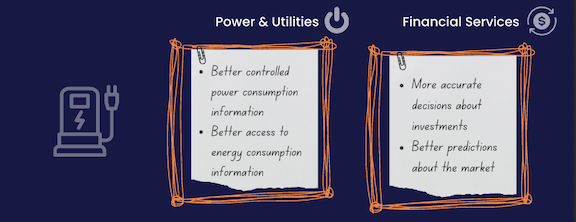
Additional consumer-related metrics and outcomes found through A/B testing of page load time and latency
Low Latency Boost for Success with Key Brands
With the implementation of AMP (Accelerated Mobile Pages), which significantly reduces page load time on mobile devices;
- Traffic from the BMW website to the sales site increased from 8% to 30%.
- While Pfizer's website's page load time improved by 38% (5.2s), the bounce rate decreased by 20% and the conversion rate increased by 9%.
- Postbank's implementation of AMP on its website resulted in 58% more leads at a 37% lower cost.
- Ebay's page load time improved by 0.1 second, resulting in a 0.5% increase in cart count.
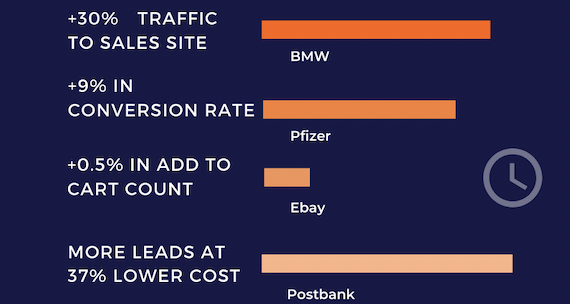
Influence of Website Load Time on the Generation of Leads
Based on 500k user sessions, findings from a test for site speed and conversion relationship show that a 0.1 second improvement in website speed resulted in a 21.6% improvement from the first step of the form to the form submission page (form completion conversion).
Mobile users' bounce rates decreased by 8.3% on informational pages and 3.9% on the homepage. During tests, the conversion rate for mobile users increasedby 1.9% while page views per session increased by 6.9%.
5G networks are predicted to have a latency of 1 millisecond or less, drastically less than the latencies of 4G networks, which can be anywhere from 20 milliseconds to 100 milliseconds or more.
As a result of their low latency, 5G networks will pave the way for not only new applications and use cases in industries that rely on real-time data transmission and processing, but also in some emerging technologies like augmented reality, virtual reality, and remote control of machines and devices.
It's important to keep in mind that the actual latency of a 5G network will depend on a number of things, such as the type of 5G technology being used, the network's location and density, and how busy it is.
In some situations, a 5G network's latency may be longer than 1 millisecond, but it's still likely to be much shorter than the latency of older wireless networks.
The following five to ten years will present the exact disruption that will be caused by the new latency that will be sustained by 5g and related technologies such as edge computing, and some of the improvements will be fascinating to observe.
Infographic
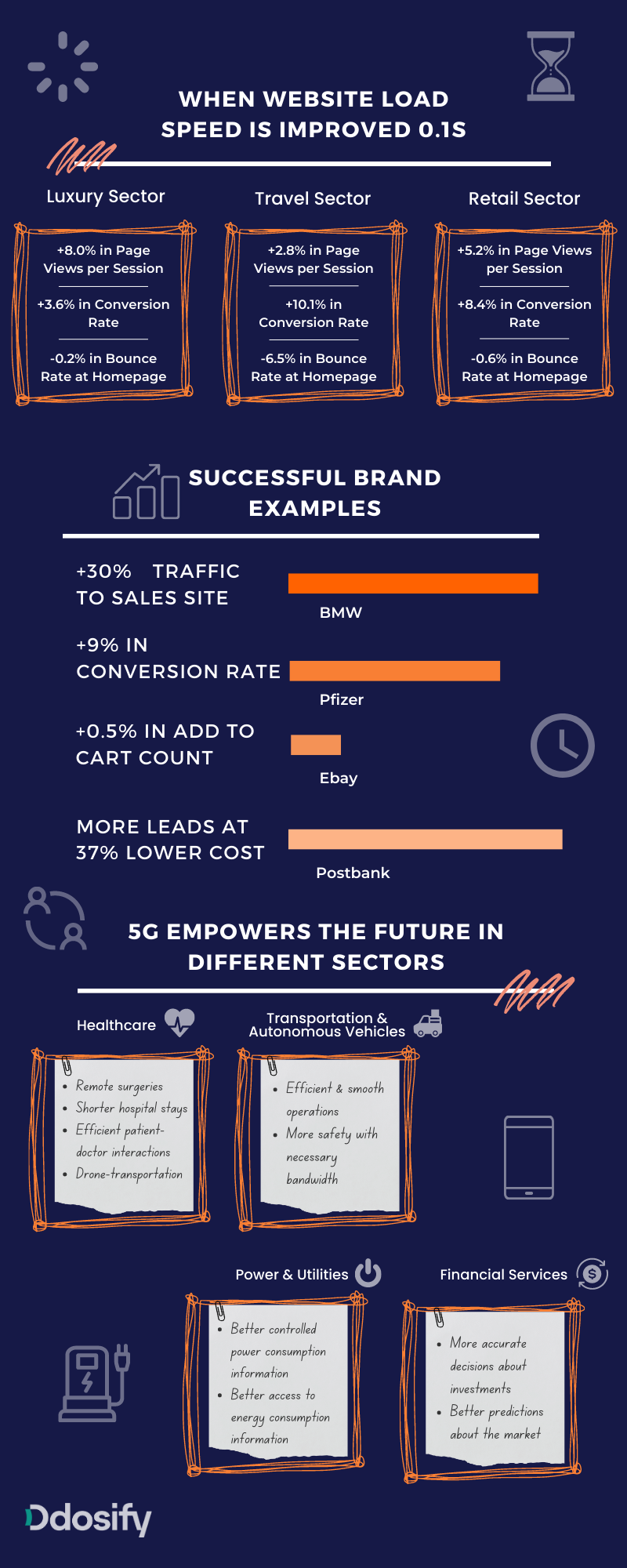
References
- https://www2.deloitte.com/content/dam/Deloitte/global/Documents/Technology-Media-Telecommunications/gx-tmt-will-5g-remake-the-world.pdf
- https://interestingengineering.com/health/china-performs-countrys-first-ever-5g-remote-brain-surgery
- https://blogs.worldbank.org/transport/5g-and-transport-envisioning-possibilities-better-connected-tomorrow
- https://www.zdnet.com/article/how-autonomous-vehicles-could-save-over-350k-lives-in-the-us-and-millions-worldwide/
- https://www2.deloitte.com/content/dam/Deloitte/cn/Documents/energy-resources/deloitte-cn-er-5g-empowerment-future-power-en-211130.pdf
- https://www.tcs.com/blogs/5g-edge-computing-capital-markets
- https://www.financierworldwide.com/5g-and-financial-services#.Y2uaF3ZBy3B
- https://www.linkedin.com/pulse/fintech-high-frequency-trading-new-application-5g-xin-tang/
- https://www.pwc.com/gx/en/tmt/5g/global-economic-impact-5g.pdf
- https://www2.deloitte.com/content/dam/Deloitte/ie/Documents/Consulting/Milliseconds_Make_Millions_report.pdf
- https://www2.deloitte.com/content/dam/Deloitte/us/Documents/technology-media-telecommunications/us-tmt-5g-deployment-imperative.pdf
- https://www2.deloitte.com/content/dam/Deloitte/pt/Documents/technology/5G-Impacts-in-Power-Utilities.pdf
- https://www2.deloitte.com/content/dam/Deloitte/cn/Documents/energy-resources/deloitte-cn-er-5g-empowerment-future-power-en-211130.pdf
- https://www2.deloitte.com/content/dam/Deloitte/global/Documents/Technology-Media-Telecommunications/gx-tmt-will-5g-remake-the-world.pdf
- https://www.ericsson.com/en/reports-and-papers/ericsson-technology-review/articles/next-generation-cloud-edge-ecosystems
- https://www2.deloitte.com/content/dam/Deloitte/us/Documents/technology-media-telecommunications/us-tmt-5g-deployment-imperative.pdf
Share on social media:

